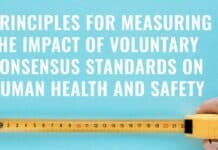 Here are the results from the Slip Fall Prevention Survey from the Healthy Facilities Institute (HFI), the National Floor Safety Institute (NFSI), and Kaivac.
Here are the results from the Slip Fall Prevention Survey from the Healthy Facilities Institute (HFI), the National Floor Safety Institute (NFSI), and Kaivac.
How well you did you do?
1. True or False – The current term to denote a safe walking surface is “slip-resistant.”
False
Although often used, the term “slip-resistant” has never been defined as having any specific safety benefit nor has there been a method of testing a “slip-resistant” walkway. The term has recently been replaced by the term “High-Traction” which is defined in the ANSI/NFSI B101.1-2009 wet SCOF standard and the recently published ANSI/NFSI B101.3-2012 wet DCOF standards.
2. True or False – Lawsuits are often easier to defend when facilities have well-documented floor safety programs including the use of National Floor Safety Institute (NFSI) “High-Traction” certified products.
True
Lawsuits are won by plaintiffs when defendant negligence is proven. Defendants with clear written policies and other documentation of tasks using NFSI Certified products are generally better protected from liability.
3. True or False – There is only one device currently approved by the NFSI to measure wet Static Coefficient of Friction (SCOF) and Dynamic Coefficient of Friction (DCOF).
True
The BOT-3000 (binary output tribometer) is currently the only device that is approved by the National Floor Safety Institute (NFSI). Although any manufacturer can submit their device for approval to date only the BOT 3000 has been submitted and approved.
4. True or False – Products must pass Phase One and Phase Two testing by NFSI under the ANSI/NFSI B101.1-2009 standard to qualify for NFSI Certification.
True
Rigorous Phase One and Phase Two testing are required by NFSI under the ANSI/NFSI B101.1-2009 standard for products to qualify for NFSI Certification. Phase One entails a pre-qualifying or screening test using the NFSI-recognized BOT-3000 field measurement device. Phase Two consists of in-depth, independent testing over a period of 30+ days in a real-world setting combined with additional on-site examination.
5. True or False – NFSI introduced its product certification system to fund its worldwide growth and enrich its founders.
False
The NFSI is a non-for-profit organization with a mission to “aid in the prevention of slips, trips and falls through education, research and standards development.” The NFSI introduced its product certification program – in which it certifies floor coverings, mats, polishes, finishes, treatments, cleaning chemicals and equipment – in June 2002 to help reduce the growing number of slip-and-fall incidents, injuries and fatalities in commercial settings.

















![[VIDEO] Collect Asset Data at the Speed of Walking a Building](https://facilityexecutive.com/wp-content/uploads/2024/02/maxresdefault-324x160.jpg)